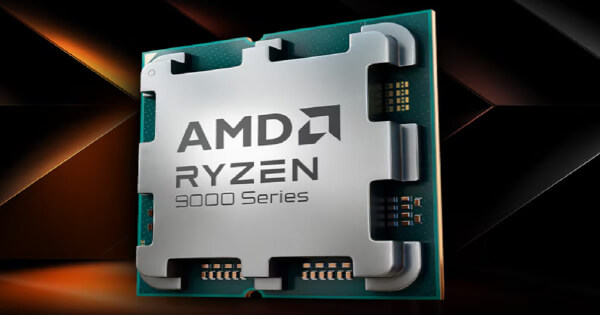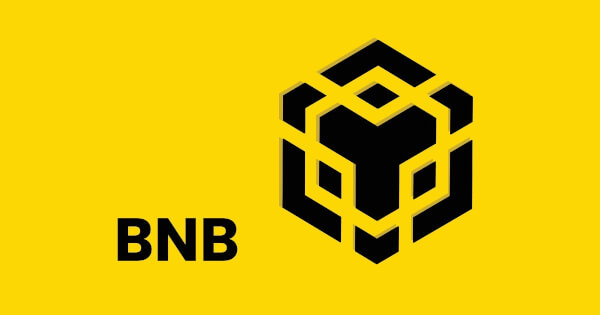Uncategorized
Bitcoin mixers no longer attractive to criminals | IDOs News

In the ever-evolving cryptocurrency landscape, the battle between security and illicit activity continues. One of the most intriguing revelations from Chainalysis’ latest report on cryptocrime and money laundering in 2024 is the diminishing appeal of bitcoin mixers to criminal entities. Based on this report, it’s clear that bitcoin mixers are mostly serving regular users who want to protect their financial privacy.
Understanding Chainalysis and data accuracy
Before delving into the report’s findings, it’s important to understand Chainalysis’ role in the cryptocurrency ecosystem. Chainalysis is a leading provider of blockchain analytics tools and services, specializing in tracking cryptocurrency transactions and identifying illicit activity. Their data is derived from comprehensive blockchain analysis, providing valuable insights into the flow of funds across different networks.
Chainalysis has established itself as a trusted source of information within the industry, with a track record of providing accurate and actionable intelligence to law enforcement, financial institutions, and regulatory bodies worldwide. While no data source is infallible, Chainalysis employs robust methodologies to ensure the integrity and reliability of its findings.
Based on data published in Chainalysis’ 2024 Crypto Crime Money Laundering Report, criminals are increasingly favoring alternative methods, such as cross-chain bridges, for money laundering purposes. In fact, “we have seen a huge increase in the volume of funds sent to cross-chain bridges.“.
The basics of coin mixing with bitcoin mixers
Bitcoin mixers, also known as bitcoin tumblers or crypto mixers, are services designed to increase the privacy and fungibility of bitcoin transactions. The bitcoin mixer works by pooling funds from multiple users and then redistributing them in a way that obfuscates the transaction history. This process of bitcoin mixing effectively breaks the link between sender and recipient, making it difficult to trace the origin of funds.
Users typically engage in bitcoin mixing to increase their privacy and anonymity on the blockchain. By mixing their coins with those of other users, individuals can obscure the trail of transactions, reducing the risk of surveillance or analysis.
CoinJoin-powered bitcoin mixers are highly effective in enhancing the privacy and fungibility of cryptocurrency transactions. CoinJoin is a privacy technique that allows multiple users to combine their transactions into a single transaction, making it difficult to trace the origin and destination of funds. This process effectively breaks the link between the sender and the recipient, significantly enhancing privacy on the blockchain.
Privacy wallets such as Wasabi Wallet, Samurai Wallet, or Trezor integrate CoinJoin functionality to provide users with enhanced privacy features. By using CoinJoin’s technology, users can increase the privacy of their transactions and protect themselves from monitoring or analysis on the blockchain.
Regulatory scrutiny and enforcement of limits
Recent scrutiny from regulators such as FinCEN has prompted bitcoin mixers to implement stricter controls and compliance measures. In response to allegations of facilitating money laundering, many bitcoin mixers have implemented limits on the amount of bitcoin that can be mixed per transaction. These limits are designed to mitigate the risk of being perceived as a hub for illicit activity and to demonstrate a commitment to compliance.
While these restrictions may inconvenience some users, they reflect a broader trend towards increased transparency and accountability within the cryptocurrency ecosystem. By taking steps to improve compliance, bitcoin mixers are seeking to establish themselves as legitimate service providers and gain the trust of regulators and users alike.
The rise of cross-chain bridges
One of the most significant shifts observed in the Chainalysis report is the migration of illicit funds to cross-chain bridges. These bridges facilitate the transfer of assets between different blockchain networks, allowing users to seamlessly move funds across different ecosystems.
In particular, there has been a notable increase in the volume of funds flowing from addresses associated with stolen funds to cross-chain bridges. This trend suggests that cryptocriminals are increasingly diversifying their tactics and using alternative avenues for money laundering.
Laundering illicit funds to alternative blockchains
Laundering illicit funds from the bitcoin blockchain to alternative blockchains, such as Avalanche or TRON, involves a meticulous process designed to obscure the origin of the tainted funds and make them extremely difficult for authorities to trace.
Cross-chain bridges effectively act as interoperable links between different blockchains, enabling the seamless transfer of assets across different ecosystems. By using these bridges, cryptocriminals can quickly traverse multiple blockchains, taking advantage of the decentralized nature of these platforms to evade traditional oversight measures.
Once the illicit funds have been successfully transferred to alternative blockchains, they can be further exchanged or used for various purposes, including investment, trading, or even as collateral for decentralized finance (DeFi) protocols. The decentralized and pseudonymous nature of these platforms provides a veil of anonymity for perpetrators, making it difficult for law enforcement to track and apprehend them.
Bitcoin mixers primarily serve regular users
After the imposition of mixing limits in response to regulatory scrutiny, bitcoin mixers experienced a shift in their intended user base. With the introduction of mixing limits, bitcoin mixers were forced to adapt their services to comply with regulatory requirements and demonstrate their commitment to combating illicit activities such as money laundering. These limits placed restrictions on the amount of bitcoin that could be mixed per transaction, effectively limiting the potential for large-scale money laundering operations.
As a result, bitcoin mixers began to position themselves as tools tailored not only to privacy-conscious individuals but also to regular users looking to increase the confidentiality and security of their transactions. By implementing mixing limits, mixers sought to strike a balance between providing privacy-enhancing services and fostering a compliant and transparent environment within the cryptocurrency ecosystem.
Regular users, including investors, traders, and everyday consumers, have increasingly turned to bitcoin mixers as a means to protect their financial privacy and guard against surveillance or analysis of their transactions. The assurance of regulatory compliance, coupled with the continued availability of privacy-enhancing features, made bitcoin mixers an attractive option for individuals seeking to maintain control over their personal financial data.
Conclusion
The findings of the Chainalysis report provide valuable insights into the evolving tactics of cryptocriminals and the countermeasures being deployed to combat illicit activity. While bitcoin mixers continue to play a role in enhancing privacy for ordinary users, their appeal to criminal entities appears to be waning in the face of increased regulatory scrutiny and the emergence of alternative laundering methods.
Uncategorized
Advantages of Mobile Apps in Gambling: The Example of Pin Up App | IDOs News

By Terry Ashton, updated August 31, 2024
Online gambling is going mobile — over 50% of players are already playing casino games on their mobile devices, and their number is expected to grow further. But does a mobile app have actual advantages over browser-based play? We decided to do more profound research by accessing and trying gambling on a desktop browser, mobile browser, and the app. That allowed us to distinguish casino mobile applications’ key benefits and drawbacks. If you’re considering using one, just keep reading — we will share some helpful insights below.
Benefits of Mobile Play at Pin Up Casino
The rise of online gambling happens for multiple reasons, including the following ones:
- Ultimate accessibility. You can access the app anywhere, even on the go. You don’t need to take additional actions — the casino opens with just one click.
- Lower Internet requirements, offline play. If you play for fun, you can do it even without an Internet connection. If you prefer to play real money, the requirements for an Internet connection will still be much lower because most data is already downloaded to your device.
- Push notifications. You can immediately learn about the new top promotions and the hottest games without checking your email.
- Special bonuses. Sometimes, special bonuses are granted to mobile players. Some casinos may add them occasionally to encourage players to play on apps.
- The same game selection. If a casino is modern and cooperates with top providers, all games will be compatible with mobile devices. For instance, if you play at Pin Up casino online, you can access the same collection of games. That goes not only for slots but also for live games, table games, etc.
- Higher security standards. The app is protected even better than the site. Data is encrypted, and the chance that anyone will access your account is close to zero.
Registration also goes smoothly. Once you sign up on the browser or app, you can access the platform with just one click by entering your Pin Up login and password.
Considering the Cons: Potential Drawbacks of Using a Pin-Up Mobile App
Nothing is perfect, and neither are casino apps. Gamblers should also consider the drawbacks, and the most common ones are as follows:
- Installing software is a must. You need to install the software on your phone. It’s safe if it’s the official casino site and a good product. However, clicking on the wrong link and downloading the wrong APK file may result in problems.
- Battery drain and storage space. It’s no secret that charging the phone all the time is annoying, and innovative slots with top graphics may drain your battery quickly. Also, though most apps don’t take much space (in the case of Pin Up, it’s just about 100 Mb), they still require more effort to manage it.
- Compatibility requirements. Any app will have technical requirements, and most aren’t compatible with old mobile devices and tablets. Also, you’ll need to install updates quite regularly.
- Smaller screen. This is a disadvantage for those who prefer playing on larger screens, particularly those who prefer live dealer games.
Do the pros outweigh the cons for you? If yes, the mobile app will boost your experience. If not, browser play may be a better option.
Final Thoughts: The App vs. Browser Play at Pin-Up Casino
Technology is shaping the industry. Nowadays, there’s no such significant difference between playing on a mobile app and a mobile or desktop browser. You get the same game selection, the same bonuses, and the same smooth experience. So, it’s a matter of taste. Choose what will work best for you and enjoy your play.
Uncategorized
NVIDIA Introduces Fast Inversion Technique for Real-Time Image Editing | IDOs News

Terrill Dicki
Aug 31, 2024 01:25
NVIDIA’s new Regularized Newton-Raphson Inversion (RNRI) method offers rapid and accurate real-time image editing based on text prompts.
NVIDIA has unveiled an innovative method called Regularized Newton-Raphson Inversion (RNRI) aimed at enhancing real-time image editing capabilities based on text prompts. This breakthrough, highlighted on the NVIDIA Technical Blog, promises to balance speed and accuracy, making it a significant advancement in the field of text-to-image diffusion models.
Understanding Text-to-Image Diffusion Models
Text-to-image diffusion models generate high-fidelity images from user-provided text prompts by mapping random samples from a high-dimensional space. These models undergo a series of denoising steps to create a representation of the corresponding image. The technology has applications beyond simple image generation, including personalized concept depiction and semantic data augmentation.
The Role of Inversion in Image Editing
Inversion involves finding a noise seed that, when processed through the denoising steps, reconstructs the original image. This process is crucial for tasks like making local changes to an image based on a text prompt while keeping other parts unchanged. Traditional inversion methods often struggle with balancing computational efficiency and accuracy.
Introducing Regularized Newton-Raphson Inversion (RNRI)
RNRI is a novel inversion technique that outperforms existing methods by offering rapid convergence, superior accuracy, reduced execution time, and improved memory efficiency. It achieves this by solving an implicit equation using the Newton-Raphson iterative method, enhanced with a regularization term to ensure the solutions are well-distributed and accurate.
Comparative Performance
Figure 2 on the NVIDIA Technical Blog compares the quality of reconstructed images using different inversion methods. RNRI shows significant improvements in PSNR (Peak Signal-to-Noise Ratio) and run time over recent methods, tested on a single NVIDIA A100 GPU. The method excels in maintaining image fidelity while adhering closely to the text prompt.
Real-World Applications and Evaluation
RNRI has been evaluated on 100 MS-COCO images, showing superior performance in both CLIP-based scores (for text prompt compliance) and LPIPS scores (for structure preservation). Figure 3 demonstrates RNRI’s capability to edit images naturally while preserving their original structure, outperforming other state-of-the-art methods.
Conclusion
The introduction of RNRI marks a significant advancement in text-to-image diffusion models, enabling real-time image editing with unprecedented accuracy and efficiency. This method holds promise for a wide range of applications, from semantic data augmentation to generating rare-concept images.
For more detailed information, visit the NVIDIA Technical Blog.
Image source: Shutterstock
Uncategorized
AMD Radeon PRO GPUs and ROCm Software Expand LLM Inference Capabilities | IDOs News

Felix Pinkston
Aug 31, 2024 01:52
AMD’s Radeon PRO GPUs and ROCm software enable small enterprises to leverage advanced AI tools, including Meta’s Llama models, for various business applications.
AMD has announced advancements in its Radeon PRO GPUs and ROCm software, enabling small enterprises to leverage Large Language Models (LLMs) like Meta’s Llama 2 and 3, including the newly released Llama 3.1, according to AMD.com.
New Capabilities for Small Enterprises
With dedicated AI accelerators and substantial on-board memory, AMD’s Radeon PRO W7900 Dual Slot GPU offers market-leading performance per dollar, making it feasible for small firms to run custom AI tools locally. This includes applications such as chatbots, technical documentation retrieval, and personalized sales pitches. The specialized Code Llama models further enable programmers to generate and optimize code for new digital products.
The latest release of AMD’s open software stack, ROCm 6.1.3, supports running AI tools on multiple Radeon PRO GPUs. This enhancement allows small and medium-sized enterprises (SMEs) to handle larger and more complex LLMs, supporting more users simultaneously.
Expanding Use Cases for LLMs
While AI techniques are already prevalent in data analysis, computer vision, and generative design, the potential use cases for AI extend far beyond these areas. Specialized LLMs like Meta’s Code Llama enable app developers and web designers to generate working code from simple text prompts or debug existing code bases. The parent model, Llama, offers extensive applications in customer service, information retrieval, and product personalization.
Small enterprises can utilize retrieval-augmented generation (RAG) to make AI models aware of their internal data, such as product documentation or customer records. This customization results in more accurate AI-generated outputs with less need for manual editing.
Local Hosting Benefits
Despite the availability of cloud-based AI services, local hosting of LLMs offers significant advantages:
- Data Security: Running AI models locally eliminates the need to upload sensitive data to the cloud, addressing major concerns about data sharing.
- Lower Latency: Local hosting reduces lag, providing instant feedback in applications like chatbots and real-time support.
- Control Over Tasks: Local deployment allows technical staff to troubleshoot and update AI tools without relying on remote service providers.
- Sandbox Environment: Local workstations can serve as sandbox environments for prototyping and testing new AI tools before full-scale deployment.
AMD’s AI Performance
For SMEs, hosting custom AI tools need not be complex or expensive. Applications like LM Studio facilitate running LLMs on standard Windows laptops and desktop systems. LM Studio is optimized to run on AMD GPUs via the HIP runtime API, leveraging the dedicated AI Accelerators in current AMD graphics cards to boost performance.
Professional GPUs like the 32GB Radeon PRO W7800 and 48GB Radeon PRO W7900 offer sufficient memory to run larger models, such as the 30-billion-parameter Llama-2-30B-Q8. ROCm 6.1.3 introduces support for multiple Radeon PRO GPUs, enabling enterprises to deploy systems with multiple GPUs to serve requests from numerous users simultaneously.
Performance tests with Llama 2 indicate that the Radeon PRO W7900 offers up to 38% higher performance-per-dollar compared to NVIDIA’s RTX 6000 Ada Generation, making it a cost-effective solution for SMEs.
With the evolving capabilities of AMD’s hardware and software, even small enterprises can now deploy and customize LLMs to enhance various business and coding tasks, avoiding the need to upload sensitive data to the cloud.
Image source: Shutterstock
-

 Uncategorized6 months ago
Uncategorized6 months agoBinance Launches VIP Margin Trading Promo with USDT and Apple Vision Pro Rewards | IDOs News
-

 Uncategorized6 months ago
Uncategorized6 months agoBNB Smart Chain (BSC) Advances with BEP 336: Introducing Blob Transactions for Enhanced Network Performance | IDOs News
-

 Uncategorized6 months ago
Uncategorized6 months ago2024년 남한에서의 암호화폐 스포츠 베팅 | IDOs News
-

 Uncategorized6 months ago
Uncategorized6 months agoState1’s GoldBrick Embarks on Presale Phase to Drive Metaverse Expansion | IDOs News
-

 Uncategorized6 months ago
Uncategorized6 months agoCoin98 (C98) Super Wallet Joins Forces with JamboPhone to Accelerate Web3 Access in Asia | IDOs News
-

 Uncategorized6 months ago
Uncategorized6 months agoImpact Of Fan Tokens On Sports Betting | IDOs News
-

 Uncategorized6 months ago
Uncategorized6 months agoBinance Labs Wraps Up Incubation Season 6 with Strategic Investments in Seven Blockchain Startups | IDOs News
-

 Uncategorized5 months ago
Uncategorized5 months agoAI bias: how blockchain can ensure its safety | IDOs News

